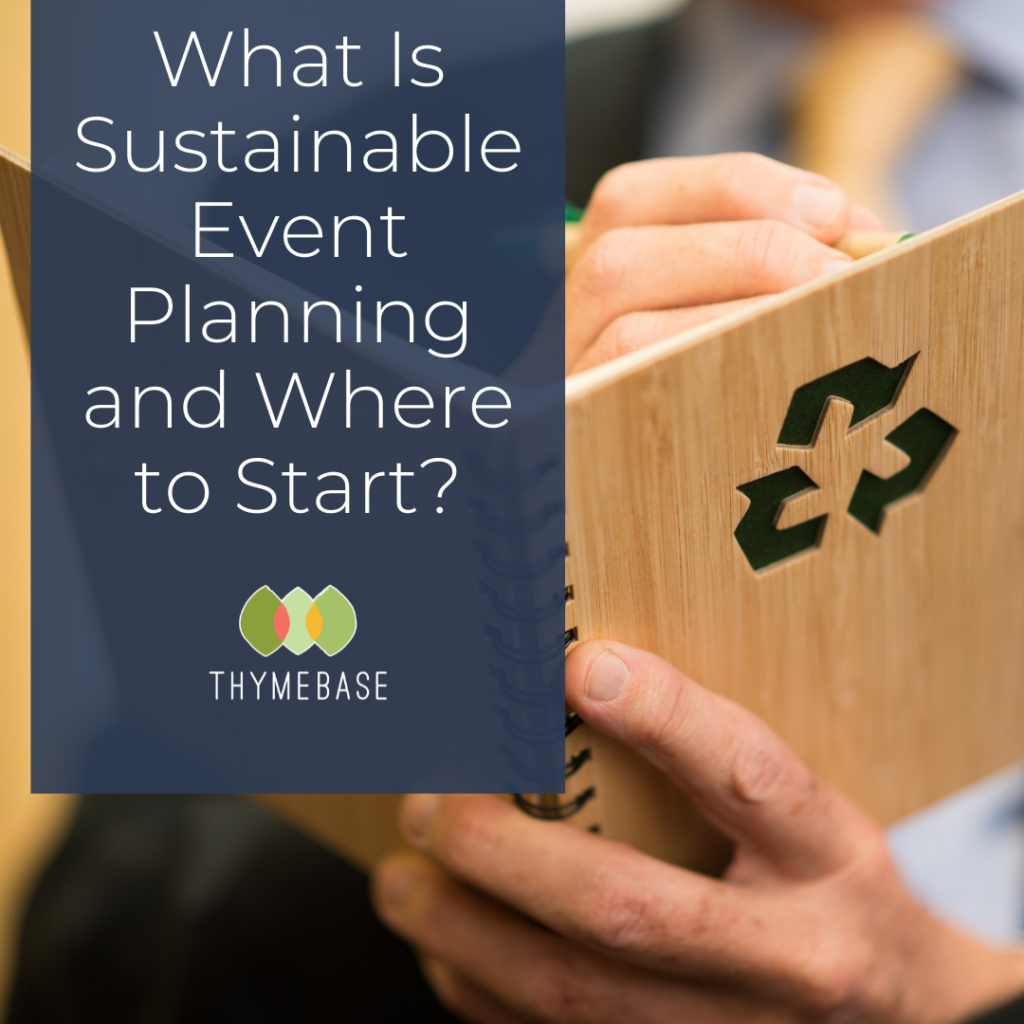If you’re wondering what sustainable event planning is all about, the following information can help you understand new methods of making your services greener.
As an event planner, appealing to the masses is critical. Since eco-conscious clients are most interested in working with like-minded people, you’ll want to assure them you can deliver sustainable meetings, workshops, and conferences that stem from a genuine interest in bettering the planet and aligning with their environmental goals.
Consumers are forcing a shift in corporate social responsibility. According to a 2020 McKinsey report, 75% of millennials consider sustainability before making an expensive purchase. This has caused companies to revamp their initiatives to make a positive environmental impact.
More businesses and individuals are expanding their efforts to forge partnerships that share similar ecological values and drive their green ambitions.
What Is Sustainable Event Planning?
A sustainable event concentrates on reducing your carbon footprint by improving environmental behaviors – from reducing unnecessary water and plastic usage to serving delicious plant-based or locally grown foods.
Sustainability has been brought to the forefront in many industries in the past few years. In 2019, the Events Industry Council began a shift for event planners towards greener practices and increased communication about sustainability.
With increasing ecological concerns, event planners must dig deeper into planning and organization to meet greener event management standards. Sustainable event planning isn’t just developing a growing awareness of environmental issues – it means you’re excited to be a part of the change.
Most importantly, corporate clients and guests will appreciate attending an event that helps them achieve their specific sustainability metrics.
6 Ways to Plan a Sustainable Event
If you’re wondering how to plan a sustainable event for your clientele, here are six ways you might consider.
1. Reduce Plastics Use
Waste is a serious issue at large events. According to one survey, a national conference attendee usually produces over 4 pounds of waste per day, most of which ends up in landfills.
Plastic pollution, in particular, is detrimental to the environment, with about 14 million tons of plastic ending up in the ocean every year.
You can reduce plastic waste at your next event by catering and serving food using non-disposable plates and utensils. Additionally, you might serve drinks in glasses or encourage guests to bring their beverages from home in reusable water bottles.
Also, opt for reusable name badges, go strawless, and leave out the helium balloons. It’s not uncommon for animals to mistake balloon latex for food, which could be lethal.
Make a conscious effort to work with vendors that use non-plastic packaging and eco-friendly marketing materials.
2. Offer a Sustainable Menu
Reduce your event’s carbon footprint by sourcing fresh, locally grown fruits and vegetables. Considering the United States agricultural industry accounts for 10% of greenhouse gas emissions, offering a sustainable menu is a great way to make eco-friendly changes to your event management services.
Purchasing produce from local farmers is beneficial for the environment and the local economy. You’re also more likely to find organic foods free from pesticides and fertilizers.
Related: Eating Seasonally: What To Eat When & Why It Matters
Other sustainable menu ideas could include serving meat from humanely pasture-raised livestock and ethically sourced fish.
Of course, creating a plant-based menu is another option. Choose seasonal produce and vegetarian dishes that have less of an environmental impact.
3. Use Less Paper
In 2018, approximately 17.2 million tons of paper waste ended up in U.S. landfills. Generate less paper waste by sending out digital invitations. Digital invites could make it even easier to communicate with guests and keep a more accurate attendance count.
Attempt to host an entirely paperless event by creating an event website that contains all the information guests need instead of brochures. You might also build a digital marketing campaign for the event, from signage to social media.
Eliminate other paper sources, including cups, napkins, and plates, and have guests check in with QR codes or emailed admissions tickets instead of paper stubs.
4. Book a Sustainable Venue
Finding a venue whose environmental values align with your and your client’s sustainability goals is probably easier than you imagine – especially since more venues seek ways to incorporate green initiatives.
To gain better insight into a venue’s sustainability efforts, you might want to ask them the following questions:
- Does your venue obtain environmental credentials or have a strategic sustainability plan?
- How does your venue intend to reduce food waste?
- Are there recycling bins available on the premises?
- How close is public transit to your venue?
- What kinds of sustainable materials do you use during events?
By asking these questions, you might learn about unique spaces or features within the venue, such as a composting station, energy-efficient appliances, fixtures, lighting, or solar-powered cooling and heating. Some venues may have corporate partnerships with other sustainable businesses, as well.
Related: 5 Questions to Ask on a Venue Walkthrough
5. Encourage Green Transportation
About 29% of U.S. greenhouse gas emissions come from transportation, releasing harmful fossil fuels from gasoline and diesel into the atmosphere. It’s also the most substantial contributor to U.S. emissions and significantly impacts climate change.
When planning an event, meeting, or conference, you’ll want to consider green transportation solutions to decrease the affair’s carbon footprint.
One way to do this could entail choosing a sustainable venue accessible by public transportation, such as buses or trains.
You might also encourage attendees to carpool or arrive via rideshare programs like Uber or Lyft. Other car-share programs are easy to organize and effective for multi-day events.
6. Host an Outdoor Event
If the weather permits, hosting an outdoor daytime event can save significant amounts of energy in lighting, heating, and cooling. It could also be a cheaper alternative for both you and your clients.
Maintain environmental responsibility by placing plenty of trash and recycling bins throughout the grounds. Work with your venue to ensure waste bins are clearly marked and find ways to reduce single-use items.
You’ll also want to promote environmental stewardship by keeping attendees away from sensitive natural areas. Consult with a land manager to determine which areas are most suitable for your event.
Build a Better Business With Sustainable Event Planning
Sustainable event management is a good look for your event planning business, and the same is true for your clientele. Although it may take some time to transition to greener sourcing for eco-friendly events, upholding environmental responsibility will positively impact the environment and the event planning industry as a whole.

Author Bio:
Cora Gold is the Editor-in-Chief of women’s lifestyle magazine Revivalist, and she enjoys keeping up with the exciting world of event planning and hospitality. Follow Cora on Facebook, Twitter, and Pinterest for more life, style, and home inspiration.

